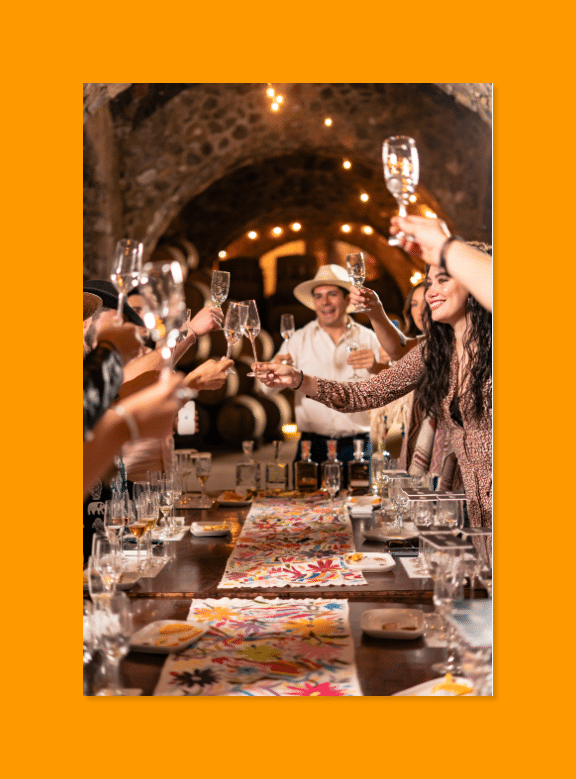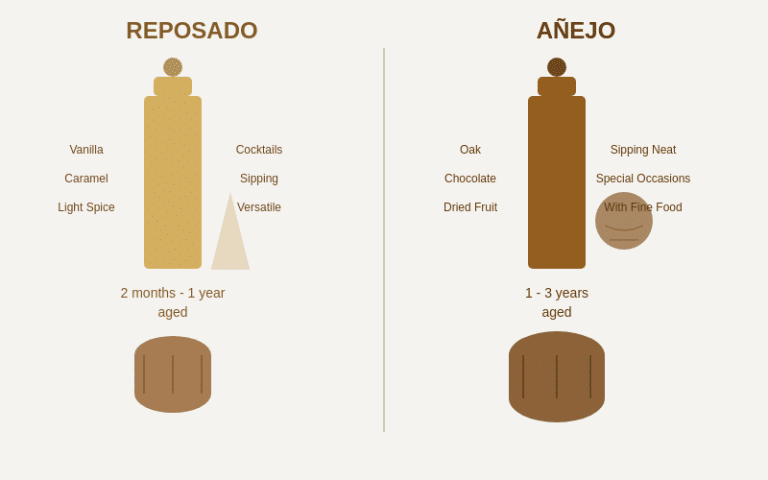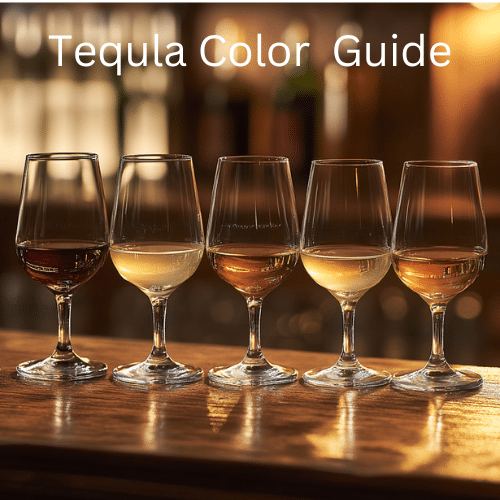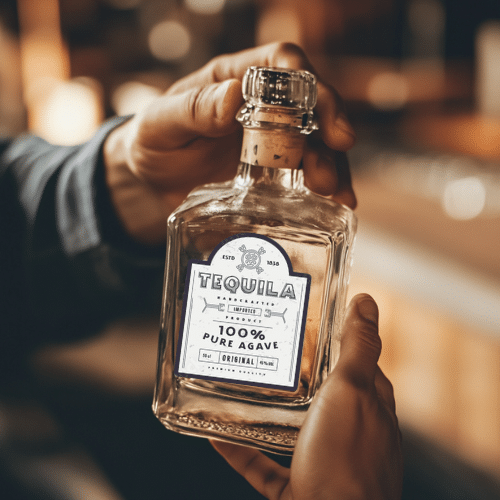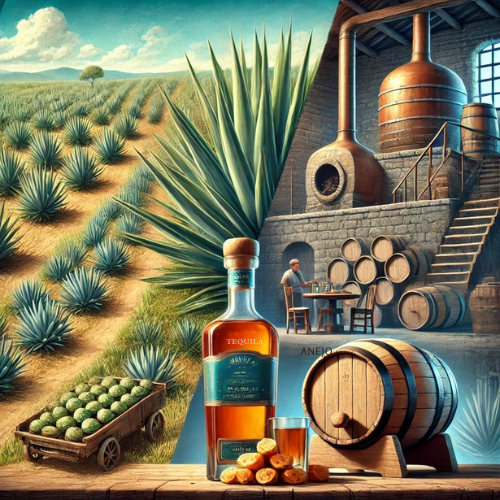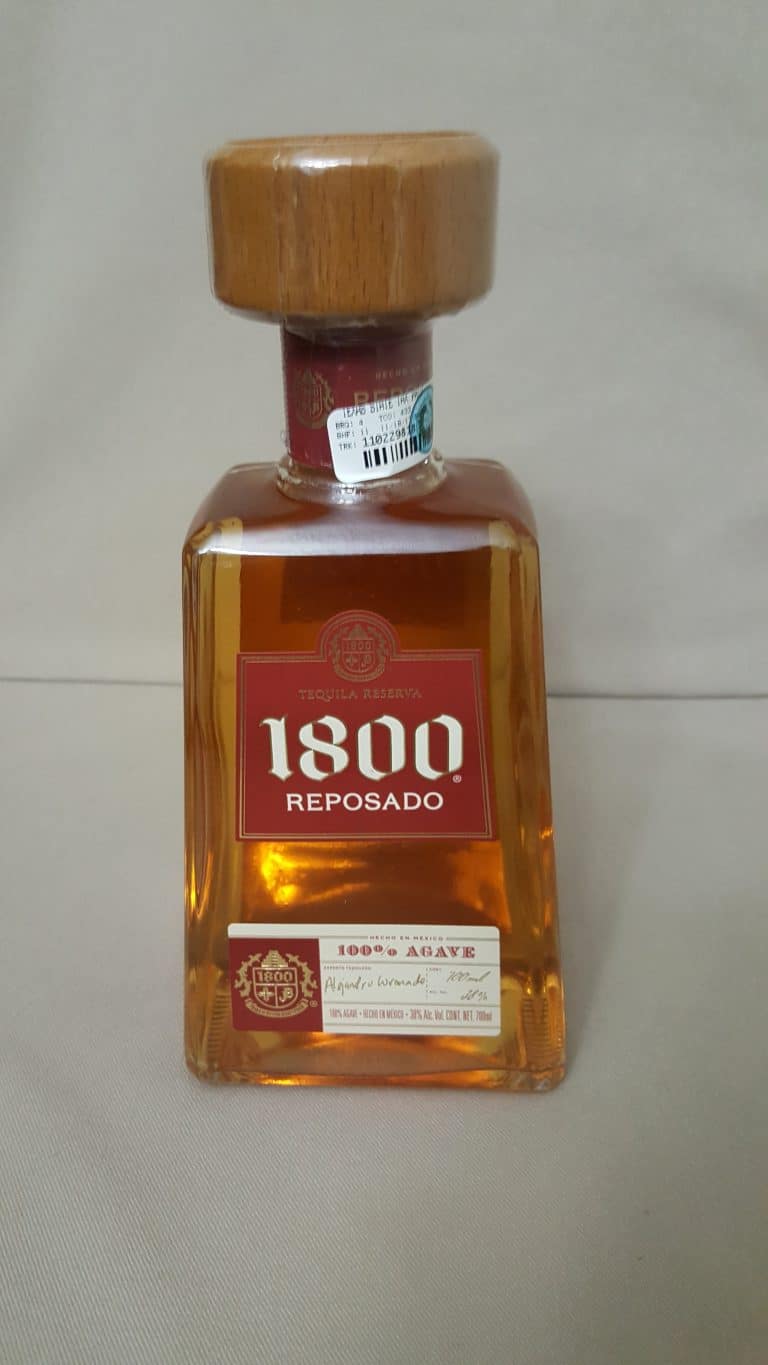10 Top Tequilas: Luxury Brands to Invest In
The premium tequila market is booming, evidenced by staggering global sales of $14.7 billion in 2024 – and…

The premium tequila market is booming, evidenced by staggering global sales of $14.7 billion in 2024 – and projections point to further growth in 2025! This transformation from a casual shot to a luxury sipping spirit has propelled certain brands to the forefront, not only for their exceptional taste but also their significant financial value. If you’re a serious collector, an aspiring investor, or simply curious about which bottles are worth acquiring, join me as we delve into the fascinating world of high-value tequila, including a look at the top tequilas driving this trend. We’ll explore both heritage distilleries with centuries of tradition and celebrity-backed brands that have rapidly appreciated in value. Discover what makes these spirits so desirable, focusing especially on the key role of Luxury Brands and the top tequila brands to invest in shaping the market.
- Jose Cuervo – 91.6 Billion
- Tequila Patron – 5.1 Billion
- Teremana – 3.5 Billion (Estimated)
- Don Julio – 2.1 Billion
- Clase Azul – 1.5 Billion
- Casaamigos – 1 Billion
- Herradura – 875 Million
- 818 Tequila – 500 Million
- Tequila 1800 – 424 Million
- Casa Dragones – 25 Million
Understanding Tequila as an Investment Asset
Tequila hasn’t always been viewed as a premium spirit. For decades, it was that shot you took with salt and lime that made you shudder. But things have changed dramatically. The transformation from a regional Mexican spirit to a global luxury commodity really gained momentum in the late 1990s and early 2000s. Premium brands like Patrón led the charge, showing consumers that tequila could be sipped and savored just like fine whiskey or cognac.
What makes a tequila valuable?
Age is obviously a big factor—añejo (aged 1-3 years) and extra añejo (aged 3+ years) command higher prices because time literally is money in aging spirits. The production method matters enormously too. Hand-harvested, brick oven-cooked, tahona-crushed agave produces tequila that serious collectors are looking for.
Limited editions and special releases are where the real money can be made. Last year, I picked up two bottles of a collaboration between a respected tequila house and a famous artist. The bottles were numbered and the run was just 2,000 worldwide. Within six months, they’d appreciated about 40%. Not too shabby for something that’s basically sitting in my climate-controlled cabinet!
Celebrity Influence: High-profile celebrities have endorsed certain brands, which has enhanced their status. Additionally, in recent years there have been a number of celebrities who have launched their own Tequila Brands. People like Michael Jordan, George Clooney, and The Rock just to name a few. As the popularity continues to increase, it is safe to assume that celebrity endorsed or owned tequila will be on the rise for the foreseeable future.
The increasing demand for premium tequila is driving up prices. Consumers are seeking high-quality options, including artisanal tequilas made from 100% blue agave, which gain further value when aged in oak barrels.
Limited supply: Blue Weber agave requires 7-9 years to mature, and strict Denomination of Origin regulations restrict tequila production to specific regions of Mexico, further limiting output and increasing costs.
Market growth: Experts at spirits auctions and investment platforms are optimistic about tequila’s investment potential from 2025-2030, fueled by market projections reaching $24 billion by 2030. This increases the likelyhood of profitability.
Considering current trends, tequila may outperform some wine and whiskey investments in the next five years. For collectors, Clase Azul’s Dia de Los Muertos limited edition bottle, while expensive, is a promising long-term investment due to its popularity.
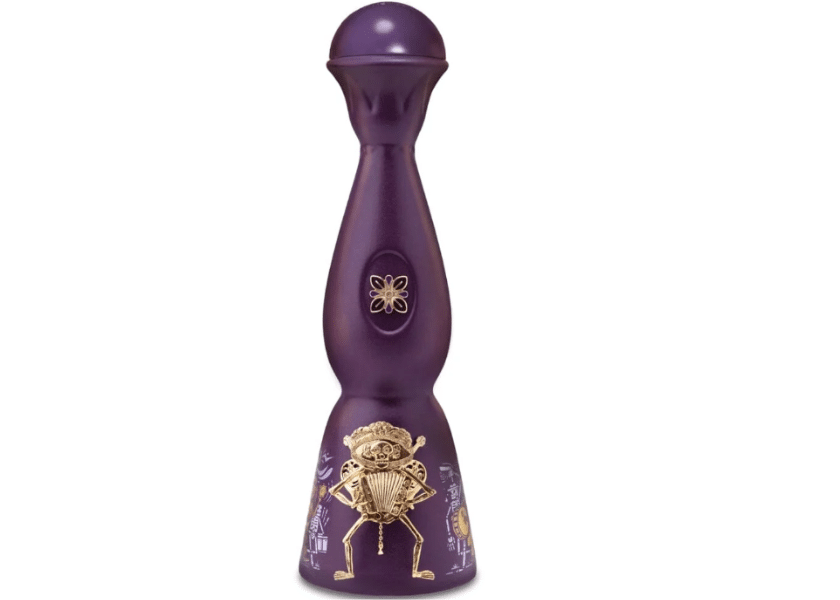
Legacy Brands: Historic Distilleries with Highest Valuations
I still remember the day I toured my first historic tequila distillery. I walked into La Rojeña, José Cuervo’s production facility, completely clueless about what I was seeing. The tour guide kept throwing around terms like “tahona wheels” and “bagasse,” and I nodded along like I knew what she was talking about. Honestly, I was just there because it seemed like a cool thing to do while visiting Tequila, Jalisco.
Little did I know I was standing in the production home of what would become one of the most valuable spirits companies on the planet. That day sparked an obsession with legacy tequila brands that’s shaped both my career and investment portfolio ever since.
Jose Cuervo
José Cuervo isn’t just Mexico’s oldest tequila producer—it’s practically the grandfather of the entire industry, dating back to 1758 when José Antonio de Cuervo received a land grant from the King of Spain. Talk about historical pedigree! After going public in 2017, Cuervo’s parent company Becle reached a market cap of approximately $7.5 billion in early 2025, making it the most valuable dedicated tequila company in the world.
What’s crazy is how they’ve managed to be both a volume leader and premium player simultaneously. Their Reserva de la Familia extra añejo sells for upwards of $180 per bottle, while their regular offerings keep the revenue flowing at more accessible price points. This dual strategy has been genius for sustaining their growth.
Herradura
I’ve tracked Herradura’s journey with particular interest because it represents such a fascinating case study in brand acquisition. Brown-Forman (the folks behind Jack Daniel’s) purchased this heritage brand back in 2007 for about $776 million. At the time, I thought they were overpaying—boy, was I wrong! The brand’s value has increased approximately 300% since then, with estimated worth now exceeding $2.3 billion(Brown-Forman).
What’s been really interesting about Herradura is watching how Brown-Forman respected the traditional production methods while modernizing the marketing and distribution. I visited their distillery in 2019, and they were still using the traditional clay ovens alongside more modern equipment. That commitment to authenticity while scaling has been key to preserving their value.
Tequila Patron
Patrón completely changed the game for premium tequila in the U.S. market. I’ll never forget scoffing at their prices back in the early 2000s—”$45 for tequila? Are they insane?” Turns out they were insane like a fox. When Bacardi acquired them in 2018, the deal valued Patrón at a staggering $5.1 billion.
What’s impressive is how they’ve maintained that premium valuation post-acquisition. Bacardi has been smart enough not to mess with the production process too much. The brand still uses the traditional tahona method where a large stone wheel crushes the agave—it’s slower and more expensive, but that commitment to quality is exactly why collectors and investors still value the brand so highly.
Don Julio
Don Julio’s value trajectory has been nothing short of remarkable. Diageo initially bought a 50% stake in 2014, then went all-in to acquire the remaining 50% in 2015. The total valuation then was around $1.5 billion. As of early 2025, industry analysts estimate the brand’s value has more than doubled to approximately $3.2 billion.
For investors looking at tequila as an asset class, these legacy distilleries offer something unique—proven staying power combined with growth potential. They ain’t cheap to get into, but the long-term appreciation has outpaced many traditional investments in my portfolio. Just wish I’d bought more Patrón before Bacardi came knocking!
Celebrity-Owned Tequila Brands and Their Market Impact
I used to roll my eyes whenever a celebrity launched a tequila brand. “Great, another famous person slapping their name on a bottle,” I’d think. Boy, did that attitude cost me some serious investment opportunities. The first time I dismissed Casamigos as “just George Clooney’s vanity project,” I missed out on what would become one of the most lucrative spirit brand stories of the decade.
Let me tell you about the night I changed my mind. I was at my buddy’s place for poker night back in 2016, and he brought out this bottle of Casamigos Reposado. I reluctantly took a sip, fully prepared to fake-compliment it. Instead, I found myself genuinely impressed. The smooth, approachable profile was nothing like what I expected from a celebrity brand.
Casamigos
A year later, Diageo acquired Casamigos for a jaw-dropping $1 billion (with additional performance incentives that could add another $300 million). I nearly spit out my coffee when I read that news. Clooney and his partners Rande Gerber and Mike Meldman had created the brand in 2013 as a private tequila for friends and family, eventually taking it public when demand grew. Their timing was impeccable—hitting the market just as premium tequila was gaining serious momentum.
The current valuation is estimated to be around $1.5 billion, with sales growing approximately 40% annually since acquisition. Diageo’s distribution muscle combined with the brand’s authentic origin story and genuine quality has made this the celebrity tequila success story against which all others are measured.
818 Tequila
Kendall Jenner’s 818 Tequila launched in 2021 amid significant controversy. I remember the backlash clearly—accusations of cultural appropriation, concerns about exploitation of Mexican resources and labor. As a tequila purist, I was skeptical for different reasons: would this be just another celebrity cash grab with inferior liquid?
The controversy actually created massive brand awareness, and despite the initial pushback, 818 has become a financial juggernaut. Within its first year, it had sold over 120,000 cases—an extraordinary figure for a new brand. By early 2025, industry analysts value the brand at approximately $400-500 million, with distribution in over 40 states and 20 countries.
What surprised me most about 818 was the quality-to-price ratio. After trying it at a friend’s gathering (I was too stubborn to buy it myself initially), I had to admit it was actually decent tequila at a reasonable price point. The brand has won several spirits competitions and seems committed to sustainability practices, which has helped silence some critics.
Teremana
Then there’s Teremana, Dwayne “The Rock” Johnson’s entry into the tequila world. I’ve never seen anything quite like its growth trajectory. Launched in March 2020 (talk about timing!), it sold approximately 300,000 cases in its first year—during a pandemic, no less. By 2022, it had surpassed 600,000 cases, making it the fastest-growing tequila brand in history.
I grabbed a bottle of their reposado during the early days out of curiosity. The Rock had positioned it as a “people’s tequila” with a more accessible price point (around $30-35) compared to other celebrity brands. Smart move. The liquid itself was clean, straightforward, and approachable—perfect for mainstream consumers looking to step up from mixto tequilas without breaking the bank.
Current industry estimates put Teremana’s valuation at around $2 billion, with annual sales exceeding 1 million cases. Johnson’s massive social media presence (over 300 million Instagram followers) has allowed the brand to grow with minimal traditional advertising. I’ve watched him masterfully integrate the brand into his lifestyle content without making it feel forced—a lesson in authentic marketing.
Cincoro
Other notable celebrity tequilas have seen mixed results. Michael Jordan’s Cincoro initially seemed overpriced to me at $70+ for their blanco, but it’s found a niche in the super-premium segment with their añejo and extra añejo expressions. Current valuation is around $150 million. Rita Ora’s Próspero and LeBron James-backed Lobos 1707 are gaining traction but haven’t yet reached the stratospheric valuations of the top players.
What’s fascinating is how these celebrity brands have expanded the entire tequila market rather than just cannibalizing existing sales. Data shows that premium tequila consumption in the U.S. has grown by approximately 40% since 2018, coinciding with this celebrity brand explosion.
I’ve learned my lesson about dismissing celebrity spirits. Now I evaluate each launch on its own merits. My current strategy? I buy one bottle to taste and one to keep sealed as a potential investment, especially for limited first releases. Some have already appreciated significantly—my sealed first-edition Teremana has nearly tripled in secondary market value.
The most successful celebrity tequila brands share three common elements: genuine owner involvement beyond just endorsement, commitment to traditional production methods, and strategic positioning in the premium-but-not-inaccessible price range. Those checking all three boxes might be worth adding to your investment portfolio, regardless of how you feel about celebrity culture!
Limited Edition and Ultra-Premium Tequilas
The world of limited edition and ultra-premium tequilas represents the pinnacle of Mexican craftsmanship, where centuries-old traditions meet modern innovation to create spirits of extraordinary complexity. These exceptional expressions transcend conventional tequila, featuring rare agave varietals, extended aging processes, and unique production techniques that may never be replicated. Ultra-premium tequilas command respect for their meticulous attention to detail, from selecting mature agave plants to employing traditional tahona wheels and rare wood barrels for aging. These spirits undergo extended maturation periods, creating complex flavor profiles that rival the world’s finest cognacs and whiskies, offering discerning palates an exploration of agave’s full potential as liquid art.
Clase Azul
The first time I held a bottle of Clase Azul Reposado, I almost dropped it. Not because it was slippery, but because my friend casually mentioned what he’d paid for it. “You spent HOW much on tequila?” I blurted out. This was back in 2012, when I thought anything over $50 for tequila was highway robbery. Fast forward to today, and that same friend’s collection of Clase Azul limited editions is worth more than his car.
I’ve since become a collector myself, and let me tell you, it’s been quite the education in how luxury tequila functions as an investment asset. Clase Azul has mastered what I call the “art collection approach” to tequila. Their hand-painted ceramic decanters are literally numbered works of art. Each one takes about two weeks to create by Mexican artisans, which immediately establishes both authenticity and scarcity.
Their limited editions are where the serious appreciation happens. I managed to snag a Clase Azul Ultra back in 2018 for around $1,800. Recent auctions have seen similar bottles going for $3,500-4,000. Their 15th Anniversary edition that originally retailed for about $2,000 now regularly fetches over $8,000 when one surfaces on the secondary market. Not a bad return for something sitting pretty on my shelf!
What makes their strategy so brilliant is the combination of exceptional liquid with collectible packaging. The tequila inside is legitimately good—aged in sherry oak barrels and incredibly smooth—but it’s the bottles that turn buyers into collectors. Each limited release tells a story about Mexican culture and traditions, creating emotional value beyond just the spirit itself.
Rey Sol
Rey Sol is another fascinating case study in luxury tequila investment. I remember hesitating to purchase my first bottle around 2015 because $250 seemed steep for an añejo, even one in a gorgeous sunburst crystal decanter designed by Mexican artist Sergio Bustamante. That same bottle would cost me close to $500 today if I could even find it at retail.
What’s remarkable about Rey Sol is its consistent appreciation—averaging about 15% annually over the past decade with remarkably low volatility compared to other luxury spirits. The liquid spends at least six years in French oak barrels, giving it exceptional complexity. I’ve opened exactly one bottle for special occasions (my daughter’s college graduation), keeping the rest as investments.
The brand has maintained strict production limits despite increasing demand, which has protected its value proposition. Unlike some brands that ramp up production to capitalize on popularity (often diluting their investment potential), Casa San Matias has kept Rey Sol deliberately scarce. There’s something to be said for that kind of discipline in brand management.
Tears of Llorona
Then there’s Tears of Llorona, which honestly changed my understanding of what tequila could be. Created by master distiller Germán González, this extra añejo is aged for around five years in a combination of scotch, sherry, and brandy barrels. When I first tried it at a tasting event in 2016, I was genuinely shocked—it had the complexity of a fine cognac while maintaining its agave character.
Initially priced around $250 when it debuted in the U.S. market, bottles now regularly command $500-600 at retail, with secondary market prices pushing $1,000 for earlier batches. What makes this brand particularly interesting from an investment perspective is that its value is driven almost entirely by what’s inside the bottle rather than fancy packaging. The modest bottle with its simple label doesn’t scream “luxury”—but serious collectors know exactly what they’re getting.
Production is extremely limited—around 12,000 bottles annually—and each batch has subtle variations that enthusiasts love to debate. I’ve managed to acquire one bottle from each of the last five batches, and comparing them side by side reveals fascinating differences despite consistent excellence.
Most Expensive Tequilas
When we talk about the most expensive tequilas ever sold, we enter truly rarefied territory. In 2020, a bottle of Clase Azul Tequila México 45th Anniversary Edition sold at auction for a staggering $30,000. What made it so valuable? Ultra-limited production (only 100 bottles ever made), a platinum-decorated ceramic decanter, and exceptional aged tequila inside.
The record for most expensive tequila ever sold still belongs to Tequila Ley .925’s “Diamante” bottling, which went for $3.5 million in 2006. That price was admittedly more about the platinum and diamond-encrusted bottle than the liquid inside, which is why serious collectors tend to view it as more of a curiosity than a benchmark.
I’ve learned that the most consistently valuable investment tequilas combine four factors: exceptional distillation quality, significant aging, strictly limited availability, and some distinctive element that makes them recognizable to collectors. That last part might be unique packaging (like Clase Azul), a legendary master distiller’s signature product (like Tears of Llorona), or historical significance (like early batches of Jose Cuervo Reserva de la Familia).
My biggest mistake as a collector? Drinking a bottle of Don Julio REAL I purchased in 2010 for around $125. That same bottling—from that exact year—recently sold at a spirits auction for over $700. Don’t get me wrong, it was delicious… but probably not $575 worth of delicious! These days I always buy two of any limited release that interests me—one to enjoy, one to invest. My liver and my retirement account both seem happier with this approach.
For those looking to start collecting, focus on limited annual releases from respected distilleries, commemorative editions marking significant anniversaries, and collaborations between legendary tequileros. And whatever you do, keep those bottles stored upright, away from sunlight, and at a consistent temperature. Nothing tanks the value of a collectible tequila faster than improper storage!
Emerging Brands with Rapidly Increasing Valuations
Some of the strongest growth stories have come from small-batch producers you might not have even heard of yet. Cascahuin is one artisanal producer that’s caught fire this year. Their traditional production methods—stone ovens, tahona wheel crushing, and small copper pot stills—create a distinctly earthy, complex profile that serious tequila enthusiasts go crazy for. What started as a cult favorite has exploded in value, with their limited releases now appreciating 60-80% within months of release. Their Tahona Blanco, which sold for around $45 in 2022, now commands $85-100 if you can even find it.
Another breakout star is Fortaleza, which isn’t exactly new but has seen its valuation skyrocket as demand has far outpaced their deliberately small production capacity. They’ve maintained traditional methods while the industry around them modernized, which initially put them at a disadvantage. Now that authenticity has become their greatest asset. Their winter blend limited releases have become some of the most sought-after bottles in tequila collecting, often appreciating 200-300% on secondary markets.
I’ve been tracking G4 Tequila closely since I visited their distillery in 2019. Created by Felipe Camarena (from the legendary tequila-making family), this brand has seen its valuation increase approximately 500% over the past three years. What’s fascinating is how their commitment to traditional methods has actually created modern appeal—they use harvested rainwater and reuse spent agave fibers as fuel, creating a sustainable production loop that resonates with today’s consumers.
What’s really shaking up the market in 2025 is the emergence of brands with truly innovative production methods that create entirely new value categories. The old rules of blanco-reposado-añejo classification are being reimagined by producers willing to experiment.
Tequila Ocho pioneered the concept of “single field” tequilas—essentially bringing terroir into tequila in a way similar to fine wine. Each batch comes from agave harvested from a single field, with vintage dating that allows collectors to explore how growing conditions affect flavor. Their valuation has increased by about 300% since 2020, with vintage collectors now seeking complete “vertical” collections of all their single-field releases.
Codigo 1530 has created massive value through their wine barrel aging program. Their Rosa expression—a blanco aged briefly in Napa cabernet barrels—created an entirely new category that others have rushed to imitate. Their recent private barrel program, where investors can purchase an entire barrel’s output of custom-aged tequila, has been massively oversubscribed despite the $15,000-25,000 price tag per barrel.
I nearly choked on my coffee when I saw the latest valuation for Maestro Dobel. Their Diamante expression pioneered the “cristalino” category—añejo tequilas filtered to remove color while retaining aged flavors. Initially dismissed as a marketing gimmick by purists like me, cristalinos have become the fastest-growing premium category. Maestro Dobel’s early innovation has translated to a brand valuation now approaching $500 million.
The sustainability angle has become a major value driver that I honestly didn’t see coming five years ago. Brands that prioritize environmental practices aren’t just winning ethical points—they’re commanding serious price premiums and investment attention.
Tequila Suro uses biodynamic farming practices for their agave, eliminating chemical interventions and focusing on soil health. Their first commercial release in 2023 sold out in hours despite minimal marketing. Recent bottles have been trading at 3-4 times their original retail price on secondary markets. Their commitment extends to packaging—their bottles are made from recycled glass and feature labels printed with agave-based inks.
Batanga Tequila has received major investment based on their innovative water conservation system. In an industry where water usage is increasingly problematic, they’ve reduced water consumption by nearly 70% compared to traditional methods. This focus on sustainability has attracted significant ESG-focused investment, pushing their valuation up nearly 400% in just two years.
I’ve been particularly impressed by several regional Mexican brands that have transformed from local favorites to international investment opportunities. These brands maintained fierce regional loyalty for generations before catching international attention.
Cascabel, a small producer from Arandas with a 120-year history but almost no presence outside Mexico until recently, has seen its valuation increase tenfold since 2021. Their distinctive earthiness and vegetal notes—once considered too rustic for international palates—are now celebrated by connoisseurs seeking authentic expressions.
Tequileño, founded in 1959 and a favorite in the actual town of Tequila, remained a hidden gem until craft cocktail bartenders started championing their unique flavor profile around 2018. By 2025, they’ve secured distribution in over 30 countries and their valuation has increased approximately 700% since 2019.
The lesson I’ve learned (sometimes painfully) about investing in emerging tequila brands is that traditional metrics often fail to predict success. Rather than just looking at current sales or distribution reach, I now evaluate brands based on production authenticity, sustainability practices, distinctive flavor profiles, and limited batch potential.
My current strategy? I’m allocating about 20% of my spirits investment budget toward emerging brands, particularly those combining traditional production with sustainable practices. I’ve started attending regional tequila festivals in Mexico to identify brands with potential before they hit the international scene. Sure beats kicking myself over that missed $5,000 opportunity back in 2020!
Remember, though—the real trick is identifying which brands have staying power versus flash-in-the-pan appeal. Fancy packaging and celebrity endorsements might drive short-term sales, but the brands creating genuine long-term value are usually the ones obsessing over what’s actually in the bottle.
Investment Strategies for Tequila Collectors
I lost about $3,000 on my first serious tequila investment. It still stings to think about it. Back in 2018, I purchased six bottles of what was marketed as a “limited edition” extra añejo from a well-known brand. The fancy packaging, the numbered bottles, the premium price tag—it all seemed like a sure bet. Three years later, I tried to resell them and discovered they were actually quite common, with thousands produced despite the “limited” marketing.
That expensive lesson taught me more about tequila investing than any guide ever could. Since then, I’ve managed to build a collection that’s appreciated by roughly 300% over five years. The secret wasn’t just buying expensive bottles—it was developing a strategic approach to identifying which bottles would actually gain value.
When it comes to identifying potentially valuable bottles, there are several indicators I’ve learned to watch for. First and foremost: actual production numbers matter infinitely more than marketing claims. A truly limited release will state exactly how many bottles were produced, usually right on the label or certificate. Anything over 5,000 bottles isn’t really “limited” in collector terms, regardless of what the marketing team claims.
I’ve found that distiller-driven special projects typically outperform marketing-driven ones. When a legendary maestro tequilero like Carlos Camarena or Germán González releases a passion project, serious collectors take notice. These bottles tend to appreciate much faster than corporate-driven “premium” releases designed primarily to hit price points.
The highland (Los Altos) versus valley (Tequila Valley) distinction has become increasingly important for collectibility. Highland agaves typically produce fruitier, sweeter profiles, while valley agaves offer earthier, herbaceous notes. Bottles that specifically highlight their regional terroir—especially single-estate releases—have shown stronger appreciation in recent years as collectors become more sophisticated.
Age statements beyond the standard categories can indicate investment potential. While regulations define añejo as aged 1-3 years and extra añejo as anything beyond 3 years, bottles specifying exact aging periods of 5+ years typically command higher premiums on the secondary market. My 7-year Fuenteseca has tripled in value since purchase, while standard extra añejos from the same period have merely doubled.
I’ve learned the hard way that proper storage is absolutely critical for maintaining investment value. Unlike wine, tequila bottles should always be stored upright. The high alcohol content can actually degrade the cork if it’s in constant contact with the liquid. A sealed bottle of properly stored tequila won’t improve with age, but improper storage can definitely decrease its value!
Temperature stability is crucial—I keep my collection at a constant 65-70°F. Fluctuations can cause expansion and contraction that might compromise the seal over time. I learned this lesson after storing some valuable bottles in my garage, where summer temperatures caused slight evaporation in several bottles, making them essentially worthless to serious collectors.
UV exposure is the silent killer of tequila collections. Light can degrade both the liquid and the label over time. After losing value on some early investments due to label fading, I invested in a dedicated cabinet with solid doors rather than glass. For bottles with significant value, I sometimes go as far as keeping the original boxes and packaging in climate-controlled storage.
One storage tip that’s saved me repeatedly: photograph everything when you acquire it. Document the fill level, label condition, closure integrity, and any unique packaging elements. This documentation has been invaluable when selling to serious collectors who want proof of proper storage and authenticity.
The auction and resale market for premium tequila has evolved dramatically in 2025. Unlike five years ago, when secondary sales primarily happened through private collectors and forums, we now have established auction platforms specializing in agave spirits. Heritage Auctions and Sotheby’s have both launched dedicated tequila auctions that provide valuable pricing transparency.
Online platforms like Tequila Matchmaker have introduced verified resale marketplaces that have helped standardize pricing and reduce counterfeit concerns. Commission rates typically range from 15-20%, but the authentication process and buyer pool make these platforms worth the cost for significant bottles.
Interestingly, Japan and Singapore have emerged as hotspots for tequila investment in 2025, with collectors there paying premiums of 20-30% above U.S. secondary market prices for rare releases. I’ve begun targeting my sales toward these markets when possible, working with specialized brokers who can navigate the export requirements.
I’ve made every rookie mistake possible when investing in premium tequila, so learn from my failures! The most common mistake is overvaluing packaging relative to content. That hand-blown glass decanter might look impressive, but serious collectors care far more about what’s inside and who made it. I’ve watched gorgeous bottles with mediocre liquid inside actually depreciate over time.
Another major mistake is ignoring the importance of provenance. As premium tequila prices have risen, so has counterfeiting. Without documentation of where and when you purchased valuable bottles, future buyers may hesitate or demand significant discounts. I now keep all original receipts and certificates of authenticity in a dedicated file.
Many new collectors make the error of focusing exclusively on añejos and extra añejos, assuming age equals value. In reality, some of the most collectible bottles in recent years have been blancos and reposados from exceptional producers using traditional methods. My Fortaleza Winter Blend Reposado from 2019 has appreciated more than any extra añejo in my collection.
Perhaps the most costly mistake is viewing tequila solely as an investment rather than a passion. The market has become sophisticated enough that inauthentic players are usually identified quickly. The collectors who consistently identify valuable bottles before others are those who genuinely love and understand tequila. My most profitable investments have come from bottles I purchased primarily because I respected the producer and production methods, with investment potential as a secondary consideration.
My current strategy involves allocating my tequila investment portfolio across three categories: 60% proven brands with limited releases, 30% emerging artisanal producers with traditional methods, and 10% speculative purchases of first releases from promising new distilleries. This approach has delivered consistent returns while allowing me to discover exciting new producers before they gain widespread recognition.
One final piece of advice that’s served me well: build relationships with specialized retailers rather than hunting for deals online. My connection with two dedicated tequila shops has given me early access to limited allocations that never made it to general release. These relationships have been worth far more than the slightly higher retail prices I sometimes pay.
For anyone starting their collection in 2025, focus on authenticatable scarcity rather than price point or marketing claims. That $300 bottle from a traditional producer with 500 numbered bottles will likely outperform that $1,000 bottle in a crystal decanter with unspecified production numbers. Trust me—I’ve got a closet full of fancy decanters that haven’t appreciated to remind me of this lesson!
Conclusion
The world of valuable tequila brands continues to evolve, offering exciting opportunities for both connoisseurs and investors. From legendary distilleries with centuries of heritage to innovative newcomers disrupting the market, tequila has firmly established itself among the world’s most prestigious spirits. As we’ve seen, factors like limited production, aging techniques, brand reputation, and even celebrity endorsements all contribute to a tequila’s ultimate value. Whether you’re looking to start a collection, make a savvy investment, or simply treat yourself to something special, understanding what makes these brands valuable helps you appreciate the craftsmanship and legacy in every bottle. The next time you’re contemplating a premium tequila purchase, you’ll have the knowledge to choose not just a delicious spirit, but potentially a valuable asset that might appreciate alongside your enjoyment!

